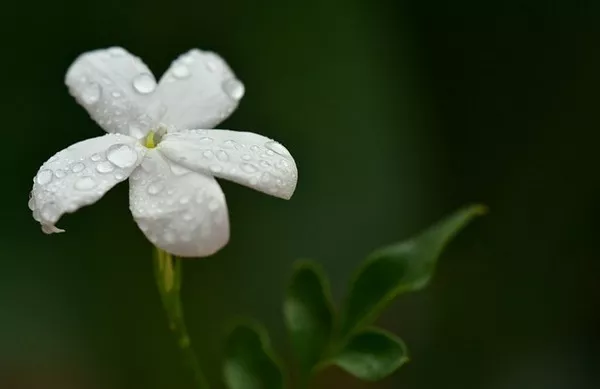Houseplants are a delightful addition to any home, offering aesthetic appeal and improving indoor air quality. However, they are not immune to pest infestations. If you’ve noticed tiny insects, webs, or damaged leaves on your beloved houseplants, it’s likely that bugs have taken up residence. Don’t fret; with the right approach, you can effectively eliminate these intruders and restore your plants to their former glory. In this article, we will explore various methods to combat bugs on houseplants, from prevention to treatment, and provide tips for maintaining a pest-free indoor garden.
Identify the Culprit
Before launching a counterattack against the pests invading your houseplants, it’s crucial to identify the specific type of bug you’re dealing with. Different pests require different treatment methods. Common houseplant pests include:
a. Aphids: Small, soft-bodied insects that cluster on plant stems and leaves, often in green, black, or red.
b. Spider Mites: Tiny arachnids that create fine webbing on plants and leave stippled or discolored leaves.
c. Mealybugs: White, cottony insects that infest plant crevices and feed on sap.
d. Fungus Gnats: Small, flying insects that lay eggs in moist soil, leading to larvae infesting plant roots.
e. Scale Insects: Tiny, immobile insects that attach themselves to plant stems and leaves, often appearing as bumps.
Once you’ve identified the pest, you can tailor your approach to effectively target and eliminate it.
Prevention Is Key
The best defense against bugs on houseplants is prevention. Healthy, well-cared-for plants are less susceptible to infestations. Here are some preventive measures to consider:
a. Choose healthy plants: Inspect new houseplants before bringing them home to ensure they are pest-free. Quarantine new additions for a few weeks to monitor for signs of infestations.
b. Isolate new plants: Keep new plants separate from your existing collection for a while to prevent any potential infestations from spreading.
c. Maintain proper hygiene: Regularly clean and disinfect your gardening tools, pots, and saucers to avoid introducing pests to your houseplants unintentionally.
d. Monitor humidity: Maintain the appropriate humidity levels for your plants, as dry conditions can make them more susceptible to spider mites.
e. Avoid overwatering: Fungus gnats are attracted to overly moist soil, so ensure that you water your plants appropriately and allow the soil to dry between waterings.
f. Prune and inspect regularly: Regularly inspect your plants for signs of pests, and promptly remove any affected leaves or stems to prevent the infestation from spreading.
Natural Remedies
If you notice an infestation in its early stages, you can often address the issue with natural remedies that are less harmful to your plants and the environment:
a. Neem oil: Neem oil is a natural insecticide that can be effective against aphids, mealybugs, and spider mites. Mix it with water and apply it to your plants, ensuring complete coverage.
b. Insecticidal soap: A solution of insecticidal soap can be sprayed onto your plants to remove soft-bodied pests like aphids and mealybugs. Be sure to follow the instructions on the product label.
c. Ladybugs: Release ladybugs into your indoor garden to naturally control aphid populations. Ladybugs are voracious aphid predators and can help keep their numbers in check.
d. Diatomaceous earth: Sprinkle food-grade diatomaceous earth on the soil surface to deter crawling insects like ants and prevent them from reaching your plants.
e. Beneficial nematodes: These microscopic worms can be used to combat fungus gnats and other soil-dwelling pests. Simply water them into the soil, and they will seek out and kill the larvae.
Commercial Pest Control Products
In more severe infestations, you may need to turn to commercial pest control products. These should be used with caution, as some chemicals can harm your plants if not applied correctly. Follow these steps when using commercial products:
a. Read the label: Always carefully read and follow the instructions on the label of any pesticide or insecticide. This includes information on dilution ratios, application methods, and safety precautions.
b. Test a small area: Before treating the entire plant, apply the product to a small, inconspicuous area to check for any adverse reactions.
c. Isolate treated plants: Keep treated plants away from healthy ones to prevent the spread of chemicals or pests.
d. Reapply as needed: Follow the recommended treatment schedule on the product label to ensure that all pests are eradicated.
Quarantine and Monitor
Even after treating an infestation, it’s essential to continue monitoring your houseplants. Bugs can reappear if any eggs or surviving pests remain. Quarantine newly acquired plants, and periodically inspect all your plants for signs of pests. Early detection can prevent a minor issue from becoming a major problem.
Conclusion
Bugs on houseplants can be a nuisance, but with proper prevention and effective treatment strategies, you can keep your indoor garden thriving and pest-free. Remember to identify the specific pest, practice preventive measures, use natural remedies whenever possible, and turn to commercial products as a last resort. By staying vigilant and maintaining a healthy environment for your plants, you’ll be able to enjoy the beauty of your houseplants without the worry of unwanted visitors.


